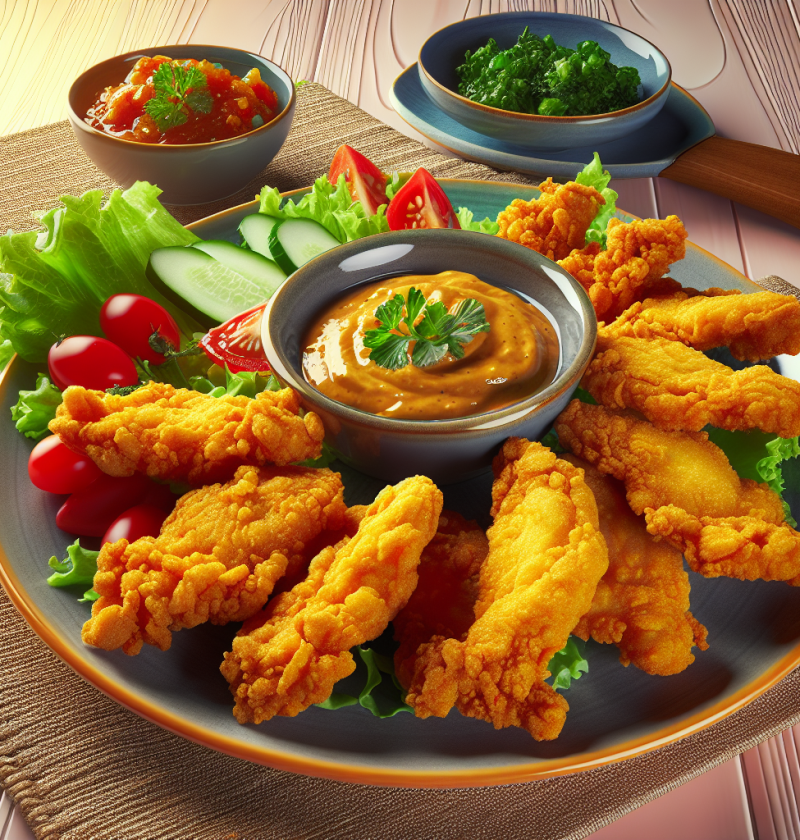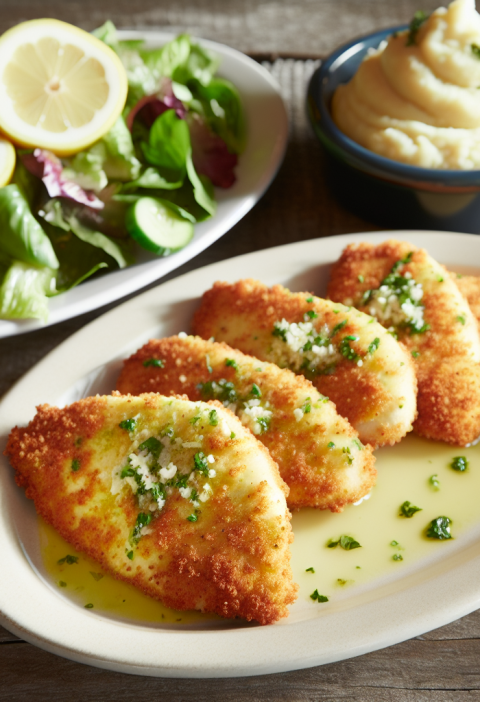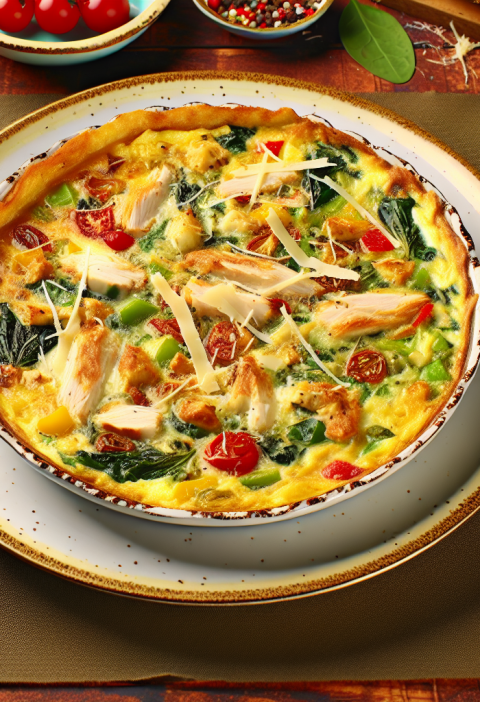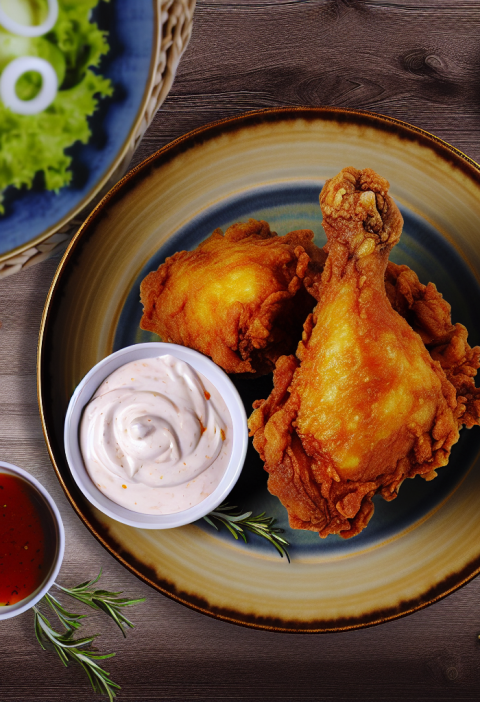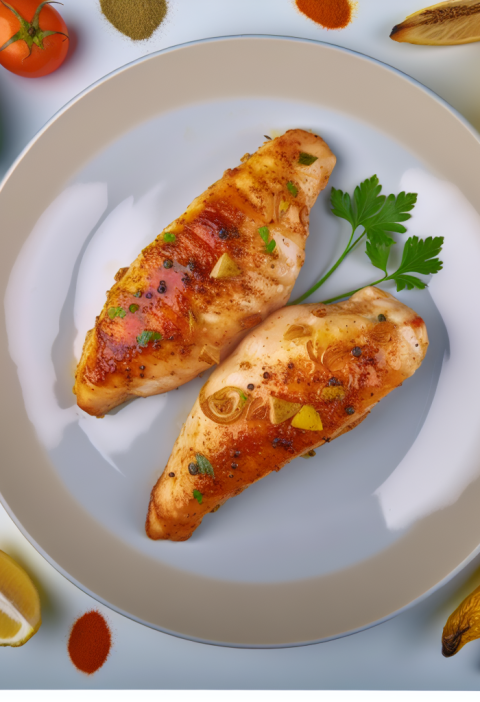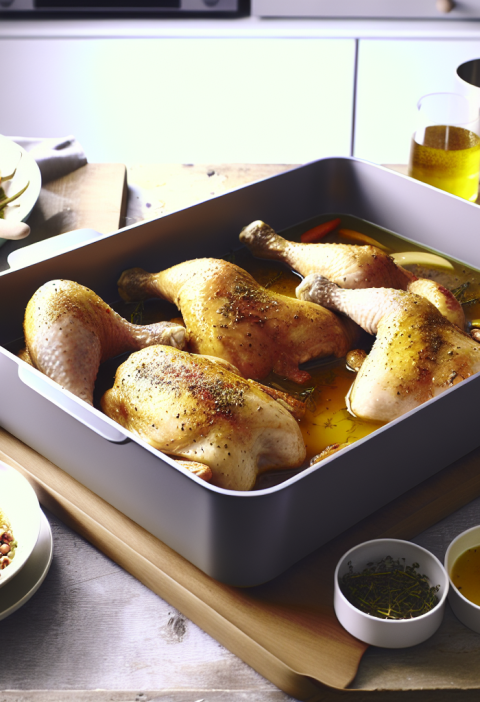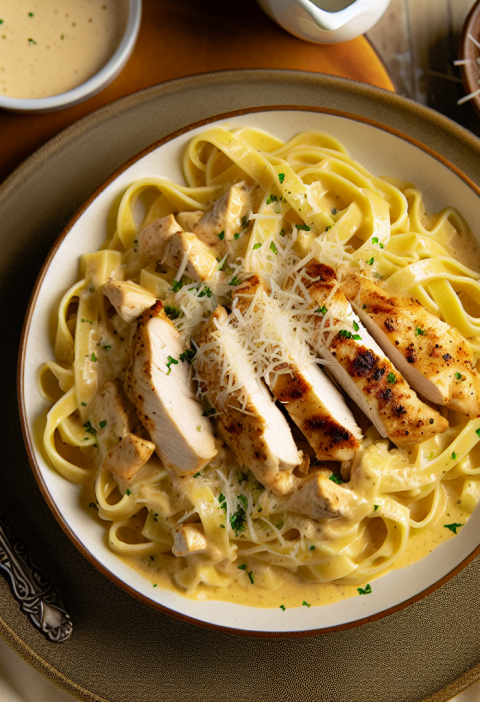“`html
Discover the Ultimate Egg Substitute for Frying Chicken: A Compassionate Kitchen Trick!
Imagine sinking your teeth into a crispy, golden-brown piece of fried chicken that melts in your mouth. Now, envision that it is crafted without any eggs, maintaining your values of compassion and sustainability. This is not just any recipe; it’s a remarkable journey that transforms the way we view comfort food and brings everyone to the table, regardless of dietary choices. You won’t believe how simple and delicious it can be! Whether you’re looking for a superb vegan option, a perfect egg-free delight, or just a twist on your traditional frying method, this egg substitute will leave you and your loved ones savoring every bite.
Preparation Time
- Preparation time: 10 minutes
- Marinating time (optional for more flavor): 30 minutes
- Frying time: 15-20 minutes, depending on the thickness of the chicken
This recipe serves approximately 4 people and is rated as easy to medium in difficulty.
The Necessary Ingredients
Here’s what we’ll need to make this scrumptious egg substitute:
- 1 cup of unsweetened plant milk (such as almond, soy, or oat)
- 1 tablespoon of apple cider vinegar or lemon juice (to create a buttermilk effect)
- 1 tablespoon of cornstarch or arrowroot powder (for binding)
- 1 tablespoon of flour (all-purpose, gluten-free, or chickpea flour for a protein boost)
- 1 teaspoon of nutritional yeast (for a savory flavor boost, optional)
For a vegan, gluten-free version, swap the standard flour for a gluten-free blend and use a cornstarch substitute if needed. This versatility allows you to cater to various dietary restrictions while preserving that delectable taste that makes everyone crave more!
The Steps of Preparation
Here’s how to use this egg substitute when frying chicken, and unleash the gourmet chef in you:
- Begin by combining your plant milk with apple cider vinegar or lemon juice in a medium bowl. Let it sit for about 5 minutes to thicken—this will mimic the texture of traditional buttermilk.
- Once thickened, stir in the cornstarch, flour, and nutritional yeast (if using) until fully blended.
- Dip each piece of chicken into the mixture, ensuring it’s well-coated and the batter clings nicely.
- Prepare your frying pan or skillet over medium-high heat, adding enough oil for deep frying or a few tablespoons for pan-frying.
- When the oil is hot, gently place the chicken pieces in the oil, cooking them until golden brown, about 7-10 minutes on each side. Ensure internal temperature reaches 165°F.
- Remove the chicken and place it on paper towels to drain excess oil, enhancing that crispy texture.
- Serve the frying chicken hot with your favorite sides, and enjoy the delightful combination of flavors and textures!
As you cook, hear the sizzle and smell the alluring aromas that fill your kitchen. The golden crust forms beautifully, and with each bite, feel that sense of achievement knowing you created a dish that aligns with your values.
Nutritional Benefits
- Plant milk provides essential vitamins and minerals, including calcium and vitamin D, promoting strong bones.
- Apple cider vinegar aids in digestion and can help regulate blood sugar levels.
- Cornstarch and flour add hearty carbohydrates essential for energy.
- Nutritional yeast is a fantastic source of B vitamins, which are vital for energy production and a healthy nervous system.
- This dish allows for lower calories and fat than traditional egg-fried chicken, making it a healthier alternative without sacrificing flavor and satisfaction.
Now that we’ve covered the basics, let’s explore the exciting world of possible additions or upgrades!
Possible Additions or Upgrades
To elevate your frying chicken to new heights, consider these delightful options:
- Add spices to your flour mixture—like smoked paprika, garlic powder, or cayenne pepper—for a spicy kick.
- Marinate your chicken in buttermilk (plant-based) for at least 30 minutes for added flavor and tenderness.
- Experiment with different types of breading like crushed cornflakes, panko, or even gluten-free breadcrumbs to create varied textures.
- Incorporate fresh herbs into the batter for a burst of freshness, such as rosemary or thyme.
- If using an air fryer, you can use less oil while still achieving that perfect crispy finish.
With these ideas, your creativity knows no bounds, and you can tailor each dish to suit your tastes and preferences. Cooking is a journey, and I encourage you to enjoy every moment!
Q & A
**Is this egg substitute suitable for frying only chicken?**
Yes, this substitute can be used for frying other proteins or veggies.
**Can we use any type of plant milk?**
Yes, any unsweetened plant milk will work well, including soy, almond, or oat.
**How can I make this dish gluten-free?**
Use gluten-free flour and cornstarch in your mixture.
**Is marinating really necessary?**
It’s optional, but marinating enhances flavor and tenderness; it’s worth trying!
**What if I don’t have nutritional yeast?**
You can omit it, but it does add a savory depth to the flavor.
**Can I bake instead of frying?**
Yes! Preheat your oven and bake at 425°F for about 20-25 minutes or until crispy.
**What oil is the best choice for frying?**
Vegetable oil, coconut oil, or canola oil are great options due to their high smoke points.
**Can I freeze the chicken after frying?**
Yes, allow it to cool, then freeze in an airtight container for later enjoyment.
**How do I maintain that crunchy texture after cooking?**
Let the chicken cool slightly on a wire rack rather than on paper towels to keep it crisp.
**Can I use this egg substitute for other meals?**
Absolutely, it’s perfect for any breading or battering needs, whether it’s for vegetables, fish, or even tofu!
Cooking this egg substitute from my own experience not only satisfies my taste buds but brings loved ones closer together at the dinner table. I believe each bite should spark joy, kindness, and shareable moments. So, if you feel compelled by this recipe, share it with your friends and family on social media! Let’s spread the joy of compassionate cooking together!
“`

